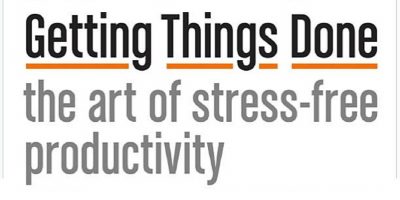When it comes to productivity, one of the best systems out there is the Getting Things Done or GTD method. The entire system is laid out in detail in David Allen’s best-selling book Getting Things Done: The Art of Stress-Free Productivity.
I’ll admit to feeling overwhelmed by the system at first. It’s strict and takes a lot of work at first. But it actually works. It takes those endless to-do lists, distractions, and ideas and turns them into something manageable. Hence, the whole stress-free part. If you’re willing to stick with the the GTD system, you’ll definitely get more done.
1. Use Collection Buckets
Getting Things Done breaks productivity down into five main steps. The first is admittedly the most difficult. This step involves collecting everything together into “buckets.” The idea is to reduce how scattered your tasks are so you don’t have to constantly try to remember everything.

Think of it like a shopping list. What’s easier – remembering it or writing it down? Obviously, the latter. Now, do this with everything. Combine your emails, to-dos, phone calls, shopping lists, etc. into collection buckets. If you’re interrupted by someone needing something, put it in the container.
You can have more than one collection, but don’t have too many. Organize them in a way that best fits your life, such as work, personal life, and hobbies. Or, you can break things down by project.
Instead of trying to remember things, which distracts you from your tasks, you have it all neatly organized. There are a variety of ways to try to remember things. Using apps, pen and paper, planners, or anything else works well as your container bucket.
Allen calls all the outstanding things not in your containers “open loops.” Putting them on your list closes the loop so you can focus better.
2. Organize Everything
You now have this massive container or containers filled with things to take care of. It’s probably a mess at this point. This is where step two and three come in. I’m combining these two steps because they work together.

Step two is actually where you prioritize your tasks. The third step involves organizing. But, you can kind of do both at once.
First, prioritize by going through your collection buckets to see what’s actually there. Divide everything into actionable or not. For actionable items, list your next actions, which are the tasks necessary to complete a goal. For each task, you have to decide the following:
- Do it now – For actions that only take a few minutes, go ahead and do them.
- Delegate it – Is this a task you can effectively delegate to someone else?
- Defer it – If it’s not something quick, defer it and set a time to do it later.
The next step is to organize everything, which is why I combined the two. You can organize each task as you prioritize. You organize both actionable and non-action items into the following categories (you can change these):
- Next actions – Whatever you didn’t finish that needs to be done soon goes here.
- Calendar – Schedule your deferred tasks so you don’t forget them.
- Someday and Maybe – These items don’t have a set time and could just be general goals.
- Reference – These are notes, emails, ideas, and anything else you could use later but don’t need right now.
- Projects and Plans – This is where you break down bigger projects and goals into actionable “next action” steps. This keeps your general next actions and project-specific next actions organized.
- Waiting – If you can’t act until something else happens, such as a phone call or email, put the task here.
- Trash – If you really don’t need the item in your bucket anymore, trash it.
This is intimidating at first, but once the system’s in place, it’ll change how you work.
3. Review
This is one of the most important steps in Getting Things Done. You’ve gone through all this hard work, but if you don’t review the lists you’ve made, nothing gets done.

Make this the only thing you have to remember; checking your lists regularly. Set a schedule that works for you, such as daily or weekly. Your general next actions list should be with you at all times to quickly work on the next task whenever you get a free moment.
4. Take Action
Finally, it’s time to take action. Use your carefully organized lists and the GTD system to get your work done. Of course, it’s not just about work but anything else in your life you need organized.

Take the time to go through the system to keep your tasks fully organized. After you get the system in place, it becomes second nature, and you realize you’re actually getting more done without all the stress.
Of course, seeing the examples in the book is extremely helpful in creating and maintaining the system for yourself.
Don’t forget to check out the One Minute Manager book review and the Power of Habit review.
